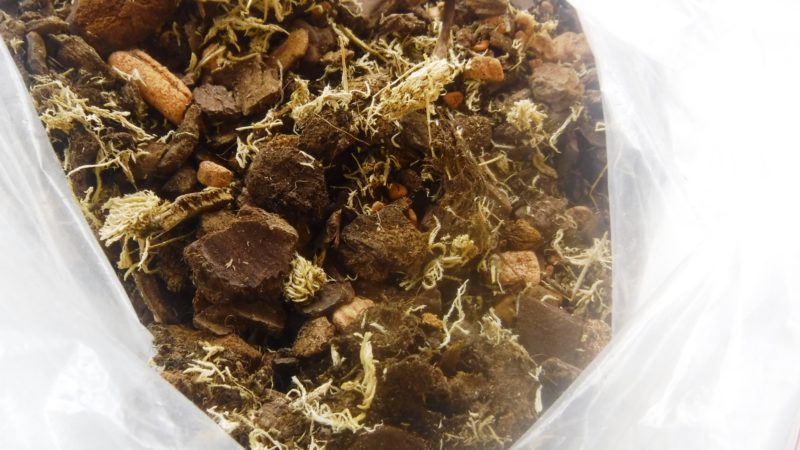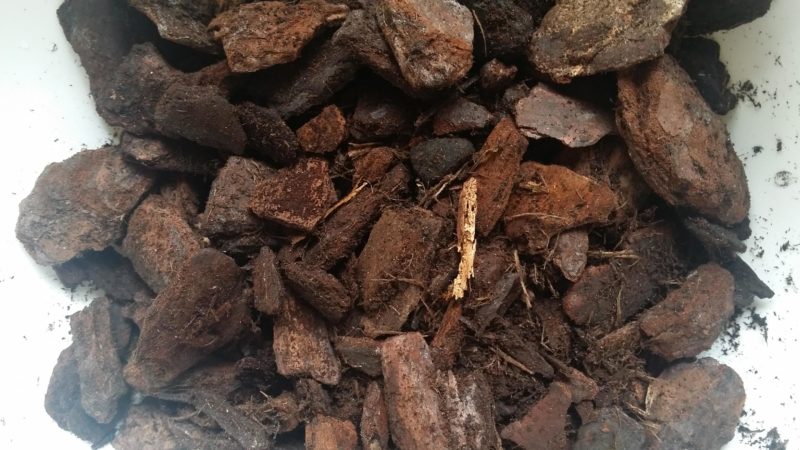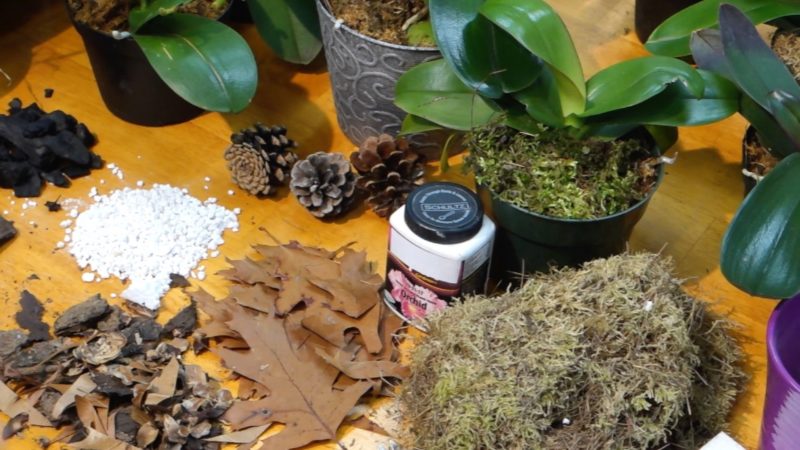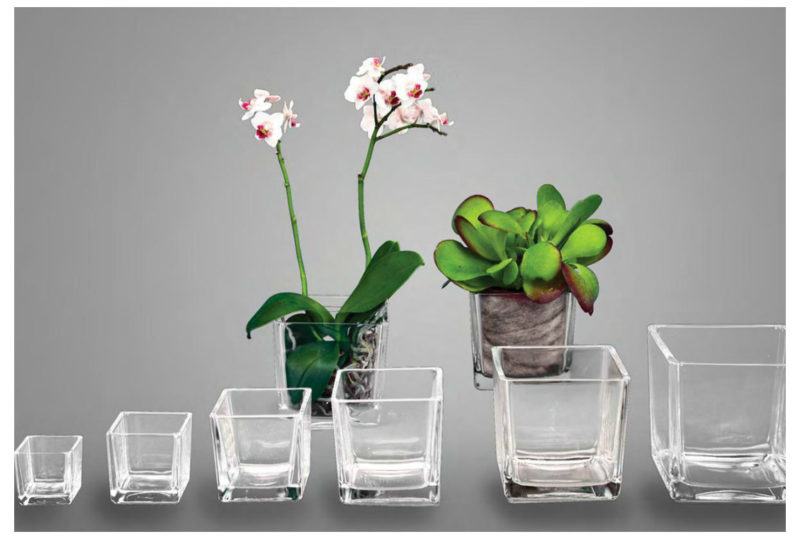Everything is unusual in this flower. And amazing, like bright tropical butterflies, flowers, and a terrific smell, and special requirements for maintenance and soil.
Material Content:
Orchid soil

These flowers, which until recently seemed exotic, are finding more and more supporters among flower growers. But orchids are so unlike the other inhabitants of the windowsill and their appearance and requirements for successful breeding that sometimes they put flower growers into a dead end, not wanting to respond to the usual care for other flowers with abundant flowering. Most often, this is due to improperly selected soil for orchids. Inexperienced breeders of these flowers try to please their pets by planting them in a greasy and nutritious soil, thereby condemning them to possible death.
Each plant is most comfortable in conditions close to natural. The vast majority of indoor orchids ancestors grew in the tropics. Among this vast family there are many wild species that can grow in mid-latitudes and even much north, but we are not talking about them now.
Most exotic beauties come from South America and Southeast Asia. These are places with constantly warm climate and humid air. But even there orchids grow under different conditions. A small part of these flowers lives in the soil, for example, some types of cymbidium, calendars, and pecheopedilums, but the soil in their habitats is very different in composition from ordinary garden soil. The main part of orchids in the struggle for existence has learned to live in the air, clinging to the bark of trees and even stones. The former are called epiphytes, and the latter are called lithophytes.The completely different conditions for the growth of diverse species of orchids make it possible to give a definite answer to the question of what should be the soil for orchids: different. And its composition depends on the living conditions of representatives of each species.
Is it possible to plant an orchid in ordinary land?
You can do this, of course. But the result of the flower grower will not please. Only northern orchids will be comfortable in it, and they are rarely bred in the room. The vast majority of tropical "exotics" without air and light access to the roots will begin to choke. Inevitably, the decay of the roots and, as a result, the death of the plant. This applies to the most common species: phalaenopsis, vandas and ascocendes. Phalaenopsis requires periodic drying of a special substrate, while vandam and ascocendes, in essence, do not need soil at all.

Baskets and pots, always perforated, in which they contain, often perform decorative functions.
Cattleya and dendrobiums feel comfortable only if the roots are provided with constant high humidity, free access to well-moistened air. With the help of ordinary soil, this can not be achieved - for these types of orchids, a special substrate is needed.
Even terrestrial cymbidiums, papiopedilums and ludisia, in addition to good leaf humus, need a lot of additives to help retain moisture and loose condition of the soil.
Some experienced orchid breeders manage to grow these plants in ordinary soil. But at the same time, it is necessary to approach very differently both to each orchid and to the conditions of its maintenance.
How to choose a primer for orchids?

The choice of soil depends on the species to which the orchid belongs. The composition of the soil is selected taking into account the conditions of plant maintenance. Literally everything is important:
- temperature in the room;
- degree of illumination and its time;
- the possibility of additional illumination in winter and autumn;
- the ability to water plants regularly;
- growth power and health status of the orchid itself.
But there are constant conditions that never change. This is what the soil itself consists of, which is necessary for the growth and flowering of orchids.
Orchid Growing Substrate Components
Epiphytic orchids live on trees, clinging to their bark roots. They are not parasites, since they do not eat the juices of other plants, but they use the nutrients that have accumulated on the bark with pleasure. Thanks to evolution, the roots of epiphytes have adapted to receive nutrition from the surrounding air. Lithophytes also behave in the same way, only the nutrient medium for them is humus accumulated on stones.
The roots of epiphytic and lyophite orchids participate in the process of photosynthesis, extracting nutrients for themselves from the air, so at least part of them cannot be left without access to light.
The root structure of epiphytes is perfectly suited for absorbing food and moisture from the air. They are covered with velamen - a layer of dead cells with a spongy structure. Small pores allow not only to absorb moisture well, but also to preserve it for some time. Dry velamen - white, saturated with moisture, it darkens. But the root tip is always shiny and green. It is not yet covered with a spongy layer and if it enters ordinary soil it will not be covered. By the color of velamen it is always possible to determine whether moisture is sufficient for a plant. In order to easily fill the moisture deficit or, conversely, to reduce its content, the soil for epiphytes and lithophytes should be loose, but not only.
Ground requirements:
- must be moisture permeable;
- good air permeability;
- pH of soil should be slightly below 7;
- low nutrient content.
Similar requirements to the soil are presented by terrestrial orchids. But soil fertility for them should be higher.
The main components that make the mixture for growing epiphytes and lithophytes:
- pine bark; remove it from recently sawn or felled trees;
- charcoal, it not only perfectly loosens the soil, but also is a disinfectant;
- fern roots;
- moss-sphagnum - it also performs a twofold function: loosens the earth and disinfects it;
- pine cones, which may well replace the bark;
- topsoil with coniferous litter;
- expanded clay;
- coconut fiber;
- natural cork, those that clog wine bottles are also suitable;
- perlite;
- Styrofoam;
- peat.
For orchids living in the soil, you will also need loose leafy earth.
Soil composition options
For ground deciduous orchids, soil of the following composition is suitable:
- 2 parts of leaf, turfy soil and humus;
- as many chopped rhizomes of fern;
- 1 part of coarse river sand and peat.
You can take another option:
- 2 parts of leafy land, horse peat and sphagnum moss;
- 1 part sand, charcoal and chopped pine bark.
Among terrestrial orchids, there are species that are called precious. Their main beauty is not in plain colors, but in very beautiful iridescent leaves. To plant them, take the following mixture:
- 1 part of rotted leaves, moss and sand;
- 2 parts chopped fern rhizomes;
- 3 parts of fibrous sod land.

For epiphytes and lithophytes, the following composition of substrates can be recommended:
- 70% of pine bark pieces, the size of which should not exceed 15 mm;
- 10% peat, perlite and sequoia bark.
Since sequoia bark is exotic for Russia, you can take a composition that is closer to our realities:
- 90% coniferous bark;
- 5% moss and charcoal.
There is another option, it is most suitable for Cattleya, dendrobium and
For phalaenopsis, dendrobium and cattleya:
- 50% coniferous bark;
- 20% of the foam, which many gardeners recommend replacing with boiled pebbles or coarse sand;
- 15% expanded clay;
- 10% peat;
- 5% charcoal.
When compiling a substrate for lithophytes, the main emphasis should be placed on stones.
For orchids that need constant substrate moisture, you can prepare it according to the following recipe:
- 40% coniferous bark;
- 30% cork;
- 20% ground polystyrene;
- 10% peat.
Or from perlite, sand, moss and peat, taken in equal parts.
For orchids that require a period of dryness between watering, you can advise a substrate of this composition:
- 40% peat;
- 25% of pine bark and polystyrene;
- 10% expanded clay.
You can buy already prepared soil for different types of orchids. But it’s much better to cook it yourself.
How to make soil for orchids with your own hands
The basis of the soil for orchids is the pine bark, fresh and without signs of decomposition.
Bark brought from the forest should be prepared before use. It is boiled for 20 minutes, broken into pieces of the right size and soaked under oppression in a solution of orchid fertilizers diluted in warm water.

All components of natural origin must be decontaminated so that they do not harm the plants.
Mixes are prepared according to the recipes and in accordance with the type of transplanted orchid. This should be done immediately before landing.
But correctly prepared soil or substrate is only half the success. In an improperly selected pot, the orchid will not grow.
What should be the pot for the orchid?

It must meet the following requirements:
- provide unhindered outflow of moisture;
- do not interfere with the flow of air to the roots and substrate;
- must have openings so that the roots can freely spread outside the pot, and they can be easily pulled out if necessary;
- it must maintain an optimum temperature for the roots of the flower.
For epiphytes, there are additional requirements:
- it must have perforation not only at the bottom, but also on the walls;
- equal height and diameter;
- correspondence of the volume of the pot and the root system of the flower.
Most often, transparent orchids made of plastic with specially made holes are chosen for orchids. Such a pot not only does not interfere with photosynthesis, it allows you to control the state of the root system of the plant.Sometimes special plastic baskets are used for some types of orchids.
For orchids that do not need access to light for the roots, you can use opaque plastic pots. They must be bright so that the roots of the plants do not overheat, and have a sufficient number of drainage holes.
In clay pots, the roots of orchids do not overheat, and moisture holds very well. But the roots can grow into the walls, which prevents the transplant. It must be done in accordance with all the rules and, first of all, to properly lay the soil.
Laying soil in a flower container
At the bottom, it is necessary to lay a drainage layer of expanded clay, polystyrene, vermicult. We lay half of the prepared substrate and another layer of drainage. Add the remaining soil and plant a flower. The main condition is not to compact the soil, it must remain loose.
Grow orchids in properly prepared soil, and they will please you with a long and plentiful flowering.












